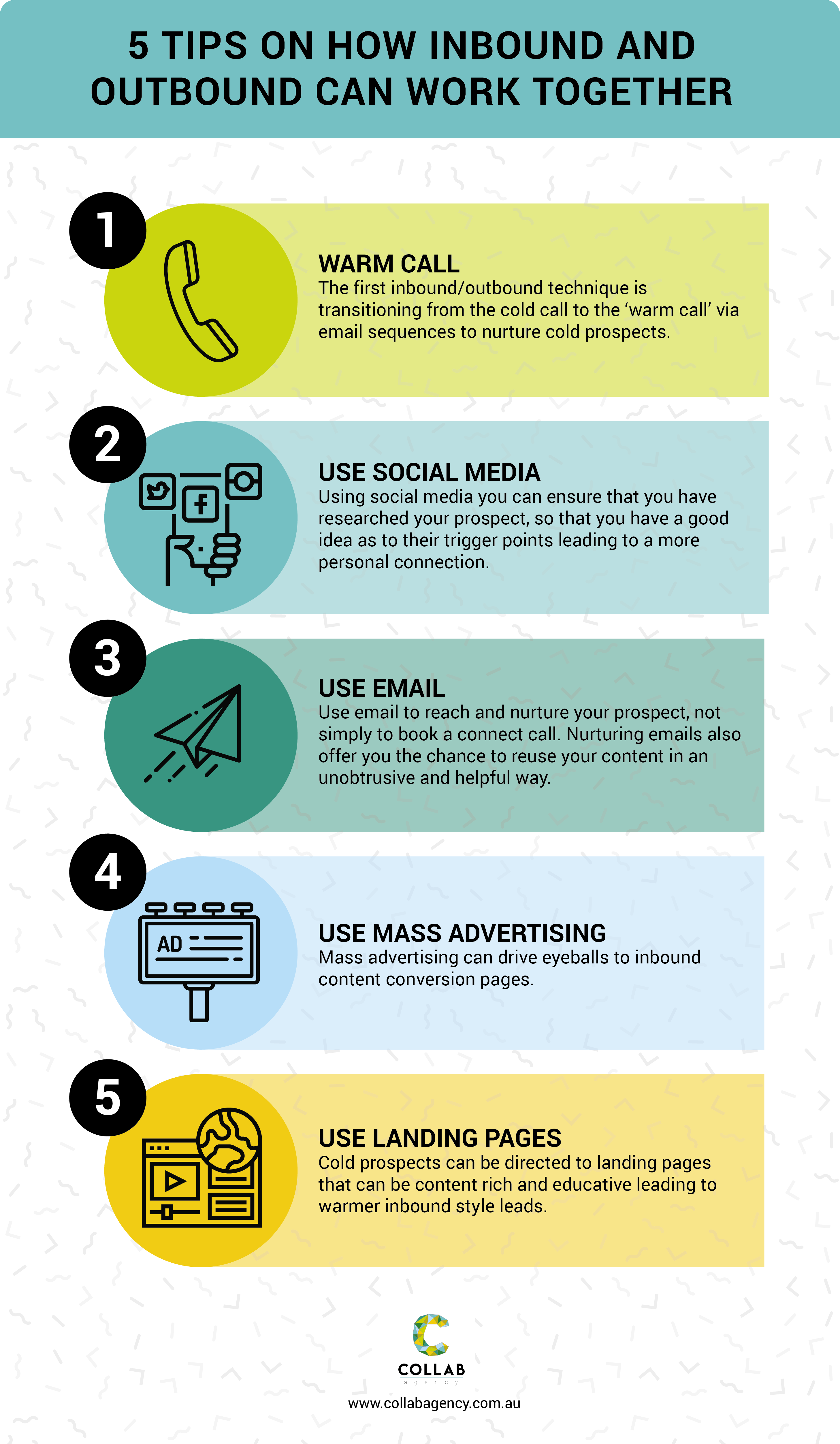Having a sales framework that your entire company is aligned with is super important and a key starting point for ongoing sustainable sales success.
Clarity around your sales framework aligns all departments on the way your business intends to source and convert its leads. More often than not, these frameworks are referred to as inbound or outbound approaches.
What is an inbound sale?
You may be familiar with the term inbound marketing and sales which has become a popular framework for companies in recent times. Inbound as the name suggests are sales that come to you. How it works is that your potential customers see or experience your content, which has value to them. Following this, prospects see value in potentially using your products or services. The prospect then becomes a qualified lead that can be converted quickly into a customer - aka an inbound sale.
What is an outbound sale?
An outbound sale is the direct opposite of inbound! The leads are often cold and typically have to be acquired by phone or email. The cold lead then needs to be educated on the need and of course your product or service solution. This process can take many months depending on the category.
The outbound sales approach is traditionally how businesses have gone to market and is a real numbers game. To help familiarise the potential customer base with the brand, companies will invest ing advertising and mass media.
Does inbound or outbound sales work best?
If the answer were simple, then there would be no need for this blog or the volumes of content related to sales management. Execution is ultimately the key for any sales organisation. However, inbound, for today’s ‘in control’ customer is a non negotiable. With the advent of new technology, such as ad blocking, call and spam filtering the effectiveness of outbound sales techniques have reduced. However, if you are expecting a torrent of inbound leads to roll in simply by converting to an inbound marketing and sales framework, then think again.
Inbound is about taking the hard, long road to success. At its core is a partnership with marketing and sales that transforms your company and it’s products into an attractive content driven entity. This takes time and commitment to bear fruit.
Outbound to inbound sales
Being an openly inbound oriented business sends an important signal to your employees, customers and suppliers. However, inbound actually needs outbound methods to achieve maximum sales for two important reasons.
- Your funnel needs reach and repetition to generate enough opportunities in the short to medium term.
- Your business needs to develop new content creation and publishing capability to drive attractiveness, which may never become a core capability.
Your inbound content is required to generate significantly more organic traffic, however you are unlikely to achieve your sales targets in the short term on inbound alone.
5 tips on how inbound and outbound sales can work together
- The first inbound/outbound technique is transitioning from the cold call to the ‘warm call’ via email sequences to nurture cold prospects.
- Using social media you can ensure that you have researched your prospect, so that you have a good idea as to their trigger points leading to a more personal connection.
- Use email to reach and nurture your prospect, not simply to book a connect call. Nurturing emails also offer you the chance to reuse your content in an unobtrusive and helpful way.
- Mass advertising can drive eyeballs to inbound content conversion pages.
- Cold prospects can be directed to landing pages that can be content rich and educative leading to warmer inbound style leads.
If your business creates great inbound content over time, your organic traffic and engagement will inevitably increase and so the need for excessive outbound reach will diminish. However, inbound and outbound will work well together in an ongoing sense, particularly if your business has embraced inbound processes and frameworks that will turn cold leads into warm leads.





